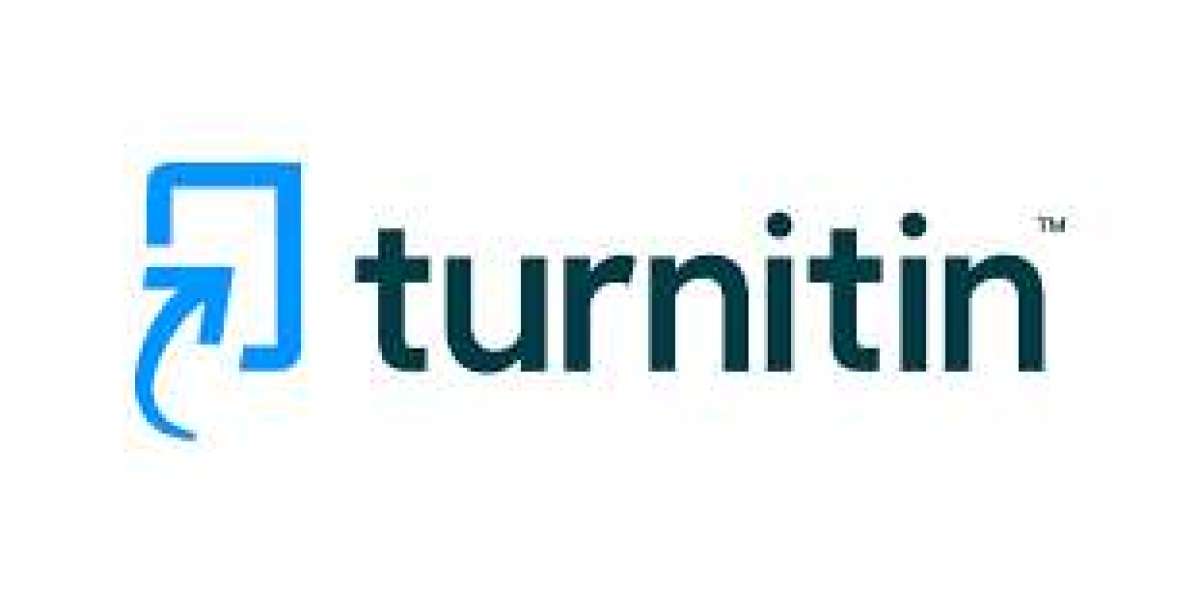As artificial intelligence (AI) continues to advance, tools like ChatGPT are becoming increasingly popular among students and professionals alike. These AI writing tools can generate essays, reports, and other forms of content in a matter of seconds. However, this rise in AI-generated content has raised concerns about academic integrity, particularly in educational settings. One of the key players in ensuring originality in academic work is Turnitin, a widely used plagiarism detection tool.
Understanding Turnitin
What Is Turnitin?
Turnitin is a plagiarism detection service used by educational institutions around the world. It scans submitted documents and compares them against a vast database of academic papers, websites, and other sources to identify potential instances of plagiarism. Turnitin has long been a trusted tool for educators to ensure that students are submitting original work.
How Turnitin Detects Plagiarism
Turnitin works by analyzing the text in a document and comparing it to the content in its database. It looks for similarities in phrasing, sentence structure, and word choice. If it finds content that matches or is very similar to existing sources, it flags these sections as potential plagiarism. Turnitin also provides a similarity score, which indicates the percentage of content that matches other sources.
The Evolution of Turnitin’s Detection Capabilities
Over the years, Turnitin has evolved to become more sophisticated in detecting plagiarism. Initially, it was focused on identifying direct matches or slightly altered text. However, as plagiarism methods have become more advanced, so has Turnitin. Today, it can detect paraphrasing, common phrases, and even some forms of translated text.
The Rise of AI Writing Tools
Introduction to ChatGPT
ChatGPT is a powerful AI language model developed by OpenAI. It can generate human-like text based on the input it receives, making it a versatile tool for a variety of writing tasks. Whether you need an essay, a creative story, or a technical report, ChatGPT can produce content that is coherent and relevant.
Popularity and Use Cases of ChatGPT
The popularity of ChatGPT has skyrocketed due to its ability to produce high-quality content quickly. Students use it to draft essays, researchers use it for summarizing papers, and businesses use it for content creation. The convenience and efficiency of ChatGPT have made it a go-to tool for many.
Ethical Concerns Surrounding AI Writing Tools
While AI writing tools like ChatGPT are incredibly useful, they also raise ethical concerns. One of the biggest issues is the potential for misuse in academic settings. Students might use ChatGPT to generate essays or reports without any original thought or effort, leading to questions about academic integrity.
Can Turnitin Detect ChatGPT Content?
The Technical Challenges
So can Turnitin detect AI? Well, detecting AI-generated content presents unique challenges. Unlike traditional plagiarism, where the content is copied from an existing source, AI-generated text is original in the sense that it’s not directly taken from another source. This makes it difficult for tools like Turnitin to detect because there is no direct match in its database.
Turnitin's Approach to AI-Generated Content
Turnitin is aware of the growing use of AI writing tools and has been working on ways to detect AI-generated content. The company has invested in AI detection technology that looks for specific patterns and characteristics typical of AI-generated text. This includes analyzing the structure, style, and coherence of the content.
Limitations of Turnitin in Detecting AI Content
Despite its efforts, Turnitin has limitations when it comes to detecting content generated by sophisticated AI like ChatGPT. AI-generated text can be highly unique and doesn’t always follow the patterns of traditional writing, making it harder for Turnitin to flag. Moreover, AI can produce text that mimics human writing styles, further complicating detection efforts.
How Turnitin's AI Detection Works
AI Fingerprinting and Watermarking
One method Turnitin uses is AI fingerprinting, which involves identifying subtle markers in the text that indicate it was generated by AI. This could include specific word choices, sentence lengths, or patterns in punctuation. Some AI tools may also include watermarks or other indicators that help identify AI-generated content.
Identifying Language Patterns and Styles
Turnitin’s AI detection algorithms are designed to identify patterns in language use that are typical of AI-generated text. For instance, AI might use more formal language, lack emotional depth, or overuse certain words or phrases. Turnitin analyzes these patterns to determine the likelihood that a piece of content was generated by AI.
The Role of Human Review in AI Content Detection
While Turnitin’s AI detection technology is advanced, it’s not foolproof. This is where human review comes in. Educators and administrators often review flagged content to make a final determination about whether it’s AI-generated. This combined approach helps ensure that genuine student work isn’t wrongly penalized.
Comparing Turnitin's Detection with Other Tools
Plagiarism Detection Tools vs. AI Detection Tools
There’s a difference between traditional plagiarism detection tools and AI detection tools. Plagiarism detection focuses on matching content to existing sources, while AI detection looks for indicators of machine-generated text. Turnitin is working to bridge the gap between these two approaches, but it’s a challenging task.
Strengths and Weaknesses of Various Tools
Each tool has its strengths and weaknesses. For example, some tools are better at detecting paraphrased content, while others excel at identifying AI-generated text. Turnitin’s strength lies in its comprehensive database and its ability to detect a wide range of content types, but it still faces challenges with the newest AI tools.
Turnitin’s Position in the Market
Turnitin remains one of the most trusted names in plagiarism detection. However, as AI tools become more prevalent, the market is seeing a rise in specialized AI detection tools. Turnitin is evolving to maintain its position, but it’s a constantly changing landscape.
The Future of AI and Plagiarism Detection
Advances in AI Writing Tools
AI writing tools are only going to get better. As technology advances, these tools will become more adept at mimicking human writing, making them even harder to detect. This presents a significant challenge for plagiarism detection services like Turnitin.
The Evolution of Plagiarism Detection Technology
Plagiarism detection technology will also continue to evolve. Companies like Turnitin are investing in new AI detection methods, including deep learning and natural language processing, to stay ahead of the curve. However, this is an ongoing battle, with AI content creation and detection technologies advancing in tandem.
The Arms Race: AI Content Creation vs. AI Detection
There’s a growing arms race between AI content creation and AI detection. As AI tools become more sophisticated, detection tools must also improve. This ongoing battle will shape the future of academic integrity and the role of technology in education.
What This Means for Students and Educators
Implications for Academic Integrity
The rise of AI writing tools has significant implications for academic integrity. Students might be tempted to use these tools to bypass the effort required for original work. Educators need to be aware of this and take steps to ensure that students understand the importance of academic honesty.
Best Practices for Avoiding Plagiarism
Students should be educated on best practices for avoiding plagiarism, including the risks of using AI tools for their assignments. Proper citation, understanding the value of original work, and using AI responsibly are key messages that need to be communicated.
Educator Strategies for Managing AI-Generated Content
Educators can implement strategies to manage AI-generated content, such as setting clear guidelines about the use of AI tools, using Turnitin’s detection capabilities, and incorporating assignments that require critical thinking and originality. Encouraging students to engage in the writing process and understand the material can help reduce reliance on AI tools.
Conclusion
AI writing tools like ChatGPT are changing the landscape of content creation, bringing both opportunities and challenges. Turnitin, while a powerful tool for detecting plagiarism, faces limitations in identifying AI-generated content. As both AI and detection technologies continue to evolve, educators and students alike must navigate this new terrain carefully. The key lies in understanding the capabilities and limitations of these tools and fostering a commitment to academic integrity.
FAQs
Can Turnitin detect all AI-generated content?
No, Turnitin cannot detect all AI-generated content. While it has some AI detection capabilities, sophisticated AI tools like ChatGPT can produce content that may not be flagged by Turnitin.
How accurate is Turnitin's AI detection?
Turnitin's AI detection is improving, but it is not 100% accurate. It can identify patterns and markers typical of AI-generated content, but there is still a margin of error.
What should students do if they use AI tools like ChatGPT?
Students should use AI tools like ChatGPT responsibly. They should not submit AI-generated content as their own work and should always ensure that their submissions are original and properly cited.
Are there any alternatives to Turnitin for detecting AI content?
Yes, there are alternative tools specifically designed to detect AI-generated content. These include AI detectors that analyze text for markers typical of machine-generated language.
How can educators stay ahead of AI-generated plagiarism?
Educators can stay ahead by staying informed about the latest AI tools, using a combination of detection methods, and fostering an environment that emphasizes the importance of original work and academic honesty.




